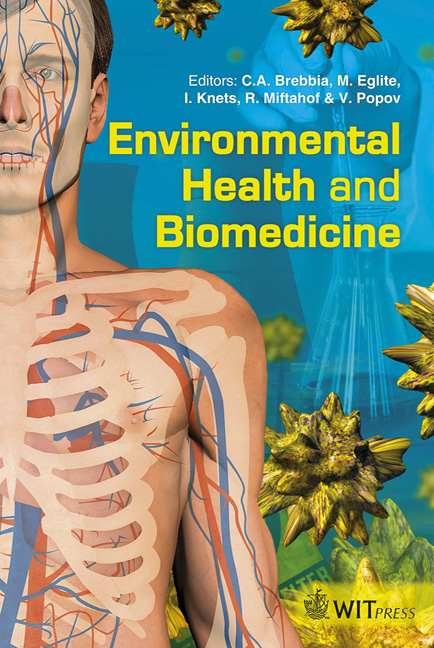Dioxins In Remediation Workers
Price
Free (open access)
Transaction
Volume
15
Pages
12
Page Range
241 - 252
Published
2011
Size
3,251 kb
Paper DOI
10.2495/EHR110221
Copyright
WIT Press
Author(s)
C. Winder & G. Smith
Abstract
A survey was conducted on workers involved in the remediation of a large, chemically contaminated site in Sydney, Australia. Workers were monitored for chlorinated dioxin and furan congeners in blood lipids over a two year period. Baseline levels of blood dioxins in workers starting at the site were similar to background dioxin levels in Australians (below 10 pg/g blood lipids). An action level of double the background levels (20 pg/g blood lipids) was used as an occupational health limit. As time progressed, blood lipid levels in workers increased, with the most likely source being exposure while working at the site. While levels of most congeners remain relatively even, most striking was the proportion of tetrachloro-congeners in exposed workers, which increased steadily. Worker exposure was above the action level in a small number of workers; these workers were transferred to other projects where the potential for dioxin exposure was absent. The role of congener profiling in occupational biological monitoring may provide additional information on workplace exposure to dioxins and related compounds. Keywords: polychlorinated dioxins, worker exposure, environmental remediation, biological monitoring. 1 Introduction The polychlorinated dioxins (CDDs) and furans (CDFs), are a group of materials that is often associated with wastes and waste disposal, and one particular member of this group, 2,3,7,8-tetrachlorodibenzo-p-dioxin (TCDD) is often incorrectly called \“the most toxic chemical ever found” [1]. While 2,3,7,8- tetrachlorodibenzo-p-dioxin is the most toxic of the CDDs, the other CDD/CDFs also have varying toxicities, and the range of toxicities can differ by a factor of
Keywords
polychlorinated dioxins, worker exposure, environmental remediation, biological monitoring





